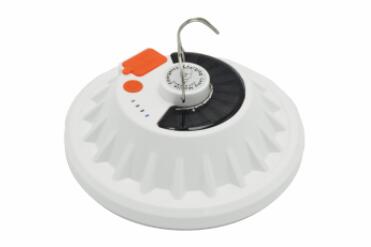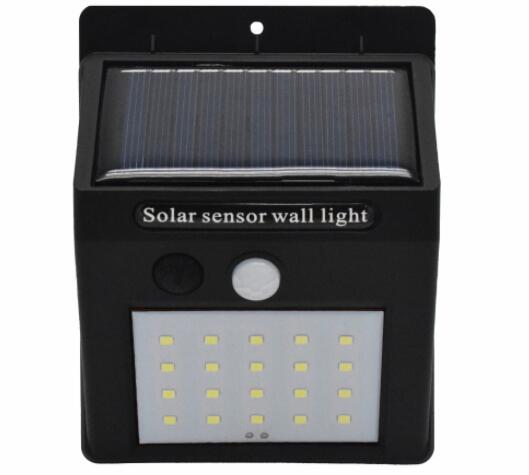Lithium iron phosphate (LiFePO4) batteries, also known as LFP batteries ("LFP" stands for "lithium ferrous phosphate"), offer significant advantages over lead-acid batteries when we compare them to lithium iron phosphate (LiFePO4) batteries, including improved discharge efficiency, longer life, and the ability to deep cycle while maintaining performance. In fact, they are typically more expensive than lead-acid batteries, but minimal maintenance and infrequent replacement make LiFePO4 batteries a valuable investment and a smart long-term solution.
Lithium batteries for solar street lights are becoming an increasingly mainstream solution. We all know that lithium batteries are still very expensive considering other types of lithium batteries, but it's fair to say that they are becoming more affordable in solar street light integration. The cost of lithium batteries has dropped by almost 80% in the last 6 years. There are different types of lithium batteries available for solar street light systems. Our experience shows that the best solution is LiFePO4 batteries.

Compared to lead-acid batteries, LiFePO4 batteries are almost four times lighter. For example, a 150ah lead-acid battery weighs about 50kg/110lbs, while the other side of the LiFePO4 battery is only 15kg/30lbs. For many solar applications, this brings huge benefits in terms of lower installation costs and faster project execution.
Lithium iron phosphate (LiFePO4) batteries are known for their strong safety characteristics, which are the result of extremely stable chemistry. They do not explode or catch fire when exposed to hazardous events such as collisions or short circuits, thus greatly reducing any chance of injury. Available Capacity In contrast to lead-acid batteries, LiFePO4 batteries can be used at 100% of their nominal capacity. When you use a 100Ah battery, lead-acid batteries can be used from 30Ah to 50Ah, while LiFePO4 batteries can be used up to 100Ah.
On the other hand, the built-in lithium iron phosphate battery, fixed on the LED light pole, thieves can not steal.
LiFePO4 batteries have a much longer life than lead-acid batteries and can work perfectly for 5-7 years, with a cycle life of up to 2500 cycles. This trade-off may be offset somewhat by the slower rate of capacity loss compared to other formulations. After one year, LiFePO4 batteries typically have roughly the same energy density as LiCoO2 lithium-ion batteries. Battery charging time is also greatly reduced, another convenient performance advantage.
To reliably power street lights, the battery pack must be charged under hours of intense sunlight and discharged throughout the evening and night. Therefore, deep cycle batteries are necessary, with LiFePO4 cells performing 3000 cycles while VRLA cells can only perform 300-800 cycles.
Both lead-acid and LiFePO4 batteries lose capacity in cold environments. At -20˚C, it still has 80% capacity compared to 30% with AGM batteries. LiFePO4 batteries are the best choice for many locations with extreme cold or hot weather.
LiFePO4 batteries can also withstand a much wider temperature range than VRLA batteries. When the ambient temperature is above 25°C (77° F), VRLA cell life decreases by 50% for every 10°C (18° F) increase, while in the case of LiFePO4 cells, it decreases by only 10-20%.
The solar panels and LED lights are connected to the lead-acid battery via a long cable, which complicates the installation process. In the case of lithium iron phosphate batteries, these losses are greatly reduced due to the proximity of the batteries to the LED lights and solar panels.
Lithium iron phosphate batteries do not need to be filled with water! They are non-water-based, lightweight and long-lasting. Plug and forget.

Lead-acid batteries are large, take longer to recharge, and provide less backup. LiFePO4 batteries are fully charged in as little as 5 hours and can last nearly 13 hours. Meaning fast charging and more backup, which is much needed in remote areas of Africa where power is a major issue.
Versatile shapes and designs: They fit into different styling designs, allowing solar street light manufacturers to create more sustainable and efficient solar street lights. Compared to lead-acid batteries, lithium iron phosphate batteries are smaller and lighter in weight. The latest developments and improvements make this type of battery a natural choice for the solar industry.

 Ni-MH Battery C4700mAh 3.6V
Ni-MH Battery C4700mAh 3.6V Nickel Cadmium Nicd Battery Pack SC1800mAh 3.6V
Nickel Cadmium Nicd Battery Pack SC1800mAh 3.6V Ni-Cd Battery Pack D4000mAh 3.6V
Ni-Cd Battery Pack D4000mAh 3.6V Ni-Cd Battery Pack C2500mAh 3.6V
Ni-Cd Battery Pack C2500mAh 3.6V NICAD Battery Pack AA900mAh 3.6V
NICAD Battery Pack AA900mAh 3.6V LiFePO4 IFR18650 1600mAh 3.2V
LiFePO4 IFR18650 1600mAh 3.2V LiFePO4 IFR18650 1600mAh 6.4V
LiFePO4 IFR18650 1600mAh 6.4V Ni-MH Battery C4000mAh 3.6V
Ni-MH Battery C4000mAh 3.6V E-bike Battery 48V 10Ah JL-1
E-bike Battery 48V 10Ah JL-1 E-bike battery 48V 10Ah Qing Tian
E-bike battery 48V 10Ah Qing Tian